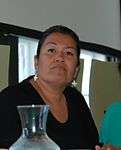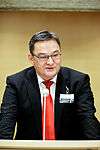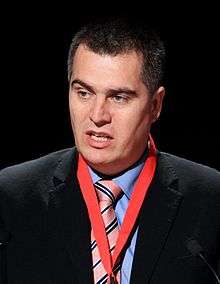Greenlandic general election, 2013
|
| |||||||||||||||||||||||||||||||||||||||||||||||||||||||||||||||||||||||||||||||||||||||||
| |||||||||||||||||||||||||||||||||||||||||||||||||||||||||||||||||||||||||||||||||||||||||
All 31 seats in the Parliament of Greenland. 16 seats needed for a majority | |||||||||||||||||||||||||||||||||||||||||||||||||||||||||||||||||||||||||||||||||||||||||
|---|---|---|---|---|---|---|---|---|---|---|---|---|---|---|---|---|---|---|---|---|---|---|---|---|---|---|---|---|---|---|---|---|---|---|---|---|---|---|---|---|---|---|---|---|---|---|---|---|---|---|---|---|---|---|---|---|---|---|---|---|---|---|---|---|---|---|---|---|---|---|---|---|---|---|---|---|---|---|---|---|---|---|---|---|---|---|---|---|---|
| Turnout | 74.2% [1] | ||||||||||||||||||||||||||||||||||||||||||||||||||||||||||||||||||||||||||||||||||||||||
| |||||||||||||||||||||||||||||||||||||||||||||||||||||||||||||||||||||||||||||||||||||||||
| |||||||||||||||||||||||||||||||||||||||||||||||||||||||||||||||||||||||||||||||||||||||||
 |
|---|
| This article is part of a series on the politics and government of Greenland |
|
|
|
|
General elections were held in Greenland on 12 March 2013.[3] The opposition Siumut party emerged as the largest in Parliament, winning 14 of the 31 seats.[4] On 26 March Siumut leader Aleqa Hammond became Greenland's first female Prime Minister.[4][5]
Electoral system
The 31 members of Parliament were elected by proportional representation in multi-member constituencies.[6] In Nuuk there was just one polling station.[3]
Campaign
The main campaign issue was exploitation of the island's mineral wealth.[3] The ruling Inuit Ataqatigiit party supported allowing foreign workers, most of whom would be Chinese, into the country to work in the mining industry, whilst the Siumut party was opposed to the proposal.[3] Rare-earth elements were of particular concern.[7]
Results
| Party | Votes | % | Seats | +/– | ||
|---|---|---|---|---|---|---|
| Siumut | 12,910 | 43.22 | 14 | +5 | ||
| Inuit Ataqatigiit | 10,374 | 34.73 | 11 | –3 | ||
| Atassut | 2,454 | 8.21 | 2 | –1 | ||
| Inuit Party | 1,930 | 6.46 | 2 | New | ||
| Democrats | 1,870 | 6.26 | 2 | –2 | ||
| Association of Candidates | 326 | 1.09 | 0 | –1 | ||
| Independents | 9 | 0.03 | 0 | – | ||
| Invalid/blank votes | 263 | – | – | – | ||
| Total | 30,136 | 100 | 31 | 0 | ||
| Registered voters/turnout | 40,613 | 74.20 | – | – | ||
| Source: Election Passport, Parties & Elections | ||||||
Government formation
Following the election results, Siumut leader Aleqa Hammond claimed that she was "in no hurry to form a coalition" and would wait to hear the demands of the other parties.[8] Hammond ultimately formed a government with Atassut and the Inuit Party.[5] Siumut took six of the eight cabinet posts, with Solidarity taking the Health and Infrastructure portfolio and the Inuit Party taking the Environment portfolio.[5]
References
- ↑ Valgresultater valg.gl (Hentet 13-03-2013)
- ↑ Nikku Olsen: Alle er velkomne i vores parti http://sermitsiaq.ag (Hentet 13-03-2013)
- 1 2 3 4 Mining question dominates Greenland poll BBC News, 12 March 2013
- 1 2 Mining proponents win Greenland election AP, 13 March 2013
- 1 2 3 "Female premier to head Greenland". Europe Online Magazine. March 26, 2013. Retrieved 26 March 2013.
- ↑ Election Profile IFES
- ↑ Greenland Votes to Get Tough on Investors; New Ruling Party Campaigned to Backtrack on Country's Recent Opening to Investment From Foreign Mining Ventures, March 13, 2013, Wall Street Journal.
- ↑ Greenland votes for change Nunatsiaq Online, 13 March 2013



